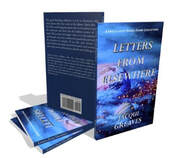What makes a monster?
There is the long-running belief that personalities are defined by either nature vs nurture. I’ve always felt this belief was erroneous. Monsters are born with potential, which life then defines. Whenever I write a monstress, she always holds that capacity, but it’s only expressed when she’s pushed beyond her limits.
Throughout history, characteristics portrayed as monstrous in women, are viewed as heroic in men. Traits such as aspiration, power, knowledge, strength, and desire in women are to be reviled.
Mythologies cast women as monsters
Greek: Medusa was raped by Poseidon in Athena’s temple. Instead of punishing Poseidon, Athena turned Medusa into a monster. The message? If you get raped, it’s your own fault and you deserved it. Also, no one will want to look at you afterwards.
Japanese: The Yamauba are exiled women accused of crimes, or elderly women abandoned when resources are scarce. Out of rage or desperation these women transform into horrible monsters who feed on humans and practice black magic. The message? Women are disposable and become monstrous when no longer under the protection of men.
Maori: Kurangaituku, the bird-woman, was betrayed & defeated by Hatupatu. Sometimes she’s described as a witch or an ogress, other times as a guardian of birds and other small creatures. The message? If women are different or other, they don’t deserve respect.
Anglo-saxon: In the saga of Beowulf, Grendel’s mother is hunted down and killed after she avenges the death of her son. The message? Women have no right to vengeance, that’s the purview of men. Women who step outside of accepted behaviours will be killed.
Myths have encoded the expected behaviour of women in society, to go beyond those boundaries is monstrous.
Who is the biggest monster?
Misogynist and patriarchal societies cast women as monsters to be controlled and conquered. The tools in their arsenals include psychological and physical abuse, rape and murder. When women reclaim their power, they’re accused of using their womanly ways to trap men and villainised for no longer fitting the mould.
Many of the stories I write begin at this point. The point where a woman pushes back, where she reclaims her voice, where she says no. No matter how monstrous she becomes, I want the reader to always question who is the biggest monster?
The power of the monstress
The monstress shows us who women can be when they're not constrained by patriarchal expectations. A monstrous character can be familiar and offer us strength and comfort. She can do, say and be the things we can’t. The monstress can challenge convention and moralities but, most of all, she can explore what it means to be human.
When speaking on a panel on this subject I told the audience I write from a position of rage - fuelled by six decades of pent-up fury. By creating and writing monstrous women, I can vicariously stab, rend, rip and torture through them. All the condescending, misogynists I meet out in the real world should be grateful – having this outlet is all that stops me from stabbing them in the eye with a pen.

 RSS Feed
RSS Feed